#makinggenerativemusic
Explore tagged Tumblr posts
Text
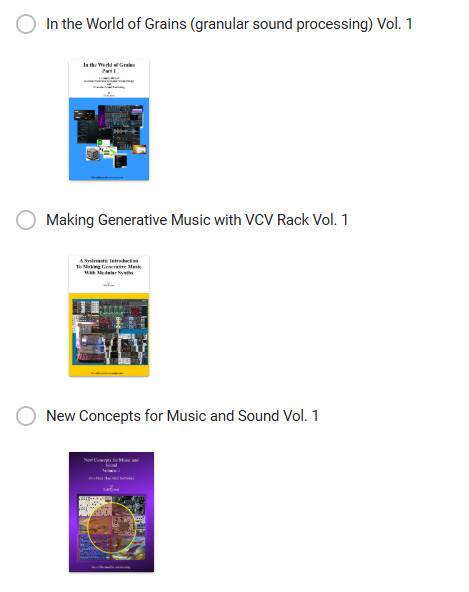
Get one of these comprehensive E-books incl. legions of patches and videos FOR FREE: https://dev.rofilm-media.net
#GenerativeMusic#ModularSynths#ElectronicMusic#MusicProduction#MusicCreativity#SoundDesign#MusicInspiration#MusicComposer#Synthesizer#MusicInnovation#CreativeExpression#MusicTheory#MusicEducation#SynthPatches#MusicalInspiration#MusicExploration#ElectronicArt#AudioAdventures#MusicMakers#learningmodular#vm#voltagemodular#cherryaudio#generativemusic#makinggenerativemusic
0 notes
Text
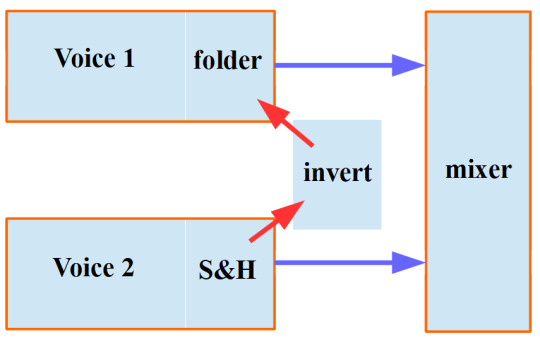
Teaching Generative Music With Modular Synths – Part 19
Chapter 5.2:
Sonic Kinfolk
(Excerpt from my e-book about making generative music – volume 1)
But it is not always about a kind of “chief” or “master” modulator (which, by the way, itself can be a complex network). Similar but different questions concerning polyphonic patches read: Which voices shall have which sources (triggers, gates, LFOs, other modulators etc.) in common? Which of of them shall be common sources all the time, and which shall be switched to only sometimes?
And even in monophonic patches do these questions exist and have to be answered BEFORE taking to the cables. Here in monophonic patches they read: Which modulating or triggering CV from anywhere (where?) in the patch shall do their modulating or triggering work in which other parts of the patch? And again: Always? Or only switched on from time to time?
A composer will ask and find the answers (a long time) before he or she patches the first cable. Of course it is about structure again, but not about the “big throw”, the overall kind of structure of the example from the beginning of this chapter. No, here I am talking about how and how much the individual parts of the piece are interwoven, what sonic, what musical relationships I want to set up.
Time for examples, I think.
In the first example there are 2 voices of quite different sonic character: a sine wave that is sent through a wave folder, and a smooth voice from BASAL. The pitch development of both voices is random (NOISE+S&H). The sound of the folded sine wave is always dominant in this mix of two sounds. But I want the acoustical dominance to rotate between the two voices. But I don´t want to change or modulate the volume of any of the voices. My (musical) goal is: the higher the pitch of the smooth BASAL voice is, the less is the wave of voice 1 (INSTRUO) folded, and vice versa. This means with deeper and less “penetrative” timbres of the BASAL voice the INSTRUO voice becomes more folded and prominent - and vice versa. As a result I get the change in leadership between the voices that I want. Technically I take the output of the S&H module of voice 2 (BASAL), send it through an inverter and from there I modulate the MIX function of the wave folder. The higher the level of the CV output of the S&H module, the less folded the sine wave reaches the audio mixer.
The preset “chapter_5_preset_5” and the following video show this example (video and preset only in my book. Get it here: https://www.dev.rofilm-media.net/node/467)
Now I take this patch and develop it further. This time I want to set up an interrelation not between the two voices, but between two parts (parameters) of one and the same voice (voice 2, BASAL). I want higher pitches to develop faster, and lower pitches to hold the notes for a longer time. To achieve that I patch the output of the S&H module of voice 2 to the FM input of the LFO that triggers this S&H module. Additionally I don´t send the S&H module´s output directly to the quantizer, but use the upper part of the double attenuverter module to add an offset to the pitch CV from the S&H module, because I don´t want the newly created quite long low pitches to be too low. At the same time I limit the pitch range using the attenuator knob of the upper part of the double attenuverter module.
The preset “chapter_5_preset_6” and the following video (videos only in the e-book)show this extended patch (video and preset only in my book. Get it here: https://www.dev.rofilm-media.net/node/467)
You surely have got what I have done by now (in this patch): I have set up a group of three parameters, have given them a common musical meaning, and let them – despite all randomness – commonly walk their musical route (pitch of voice 2, “speed” of voice 2 and amount of wave folding in voice 1).
… to be continued
Stay creative and enjoy your day!
Rolf
or what about visiting our Facebook group: https://www.facebook.com/groups/rofilmmedia
#generative#generativemusic#modularsynths#musicproduction#sounddesign#sequencer#sequencers#makinggenerativemusic#modulargenerative#generativemodular#learninggenerative#learningmodular
0 notes
Text
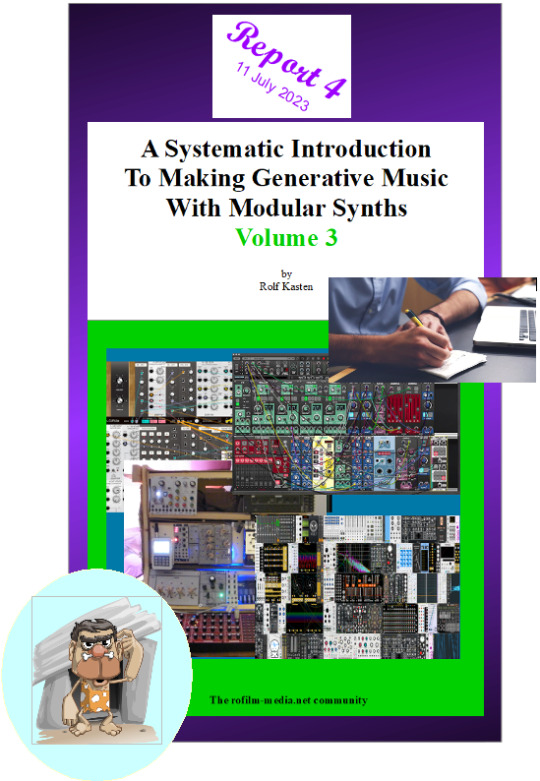
A Productive Delirium
The two weeks have been rather extraordinary. Even if I had to fight some quite awkward “summer illnesses” I managed to write 20 pages (A4), make 27 graphics, 22 new presets as well as shooting 21 video clips about it all.
But the perhaps most important thing to mention is a sudden inspiration which hit me while Ï was bound to stay in bed. The only view I could enjoy was the view into my garden (some call it a jungle, but I like it that way) through the balcony door. No wind was going, a hot summer day, only some few birds singing here and there.
Day after day always this same picture – and suddenly I heard music in my mind. I saw these very slow, very lazy movements of the high grass in a nearly only imaginary wind, a single leaf changing its position only a tiny little bit … hours after hours.
And slowly a relaxed tune, only a single one at first, was in my mind. So clear, so real as if I was listening to real music. Then a second voice, a third one, a fourth one.. all synchronous to these slight movements.
And piece by piece a whole symphony of ambient generative music built itself up in my mind. I didn´t do anything but just listening to what was going on in my head and watching the picture of my garden through the open balcony door.
A few days later when I was a bit better I took notes, drafted first patches. This piece is going to be a part of the book for sure.
Just follow these Wednesday reports on https://dev.rofilm-media.net and learn more about this trilogy dedicated to making generative music.
And don´t forget: You can still save big at the moment!
Enjoy your day!
Rolf
#generativemusic#music#sound#musicproduction#sounddesign#modular#modularsynthesis#modularsynths#vcv#vcvrack#vcvrack2#learningmodular#synthpatches#patchingmodulars#patchingmodularsynths#producinggenerativemusic#makinggenerativemusic#howtomakegenerativemusic#vcvrackpresets#vcvrackpatches
1 note
·
View note
Text
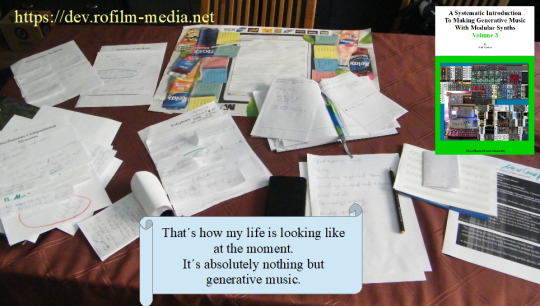
Has there ever been produced something more comprehensive than this trilogy?
#generative#generativemusic#makinggenerativemusic#producinggenerativemusic#music#musicproduction#producingmusic#modular#vcv#vsvrack#vcvrack2#modularsynths#modularsynthesizer#learningmodular#synthpatch#modularsynthpatch
0 notes
Text
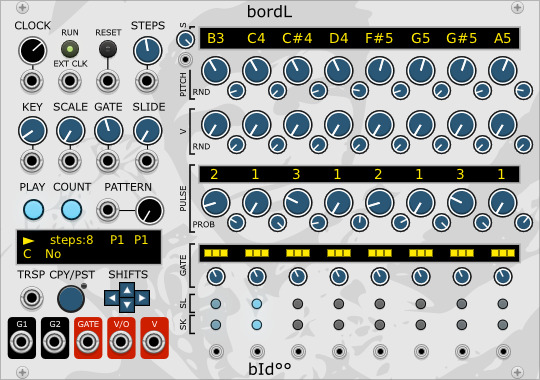
Thoughts on Generative Music – Part 5
I promised it in earlier parts. So here it is: a more detailed description of the generative software sequencer bordL in VCV Rack 2. This generative software piece of gear offers functions, which we find in hardware sequencers only at very high price ranges – and it offers it all for free – not to mention, that with “bridge” hardware modules like the ES-8 (Expert Sleepers) you can use bordL to sequence your hardware Eurorack modules too. https://youtu.be/L14Ckjp7GbU
"bordL" can be externally clocked or can run using its internal clock, which can be CV modulated. There is a reset button and a step dial, both can be addressed by external CV. Even if there are only 8 pitch dials we can built 16 step sequences (see later in this article).
The upper 2 rows of potentiometers set the pitch (big knobs) and the randomness (small knobs) of each step. The term randomness concerns only the adjusted pitch (whether the step will produce the chosen pitch or another one), not the probability of producing a signal at all (skip or not skip this step). The pitch CVs are quantised to the chosen scale and the chosen root note. The root note of the scale is called “Key” and can be adjusted with the knob on the right of the GUI. Next to the “Key” knob there is the “Scale” knob. Both parameters can be modulated by external CV. The third and the fourth row of potentiometers also set the pitch (big knobs) and the randomness (small knobs), but they are not quantised at all. The tiny knob to the right of the row of quantised pitch potentiometers sets the so called “pitch sensitivity” of these quantised (and only of these quantised) potentiometers. Pitch sensitivity is more or less a compaction or expansion of the chosen scale. (the video is available only in the book)
Each step can be played more than only once. The number of repetitions is set with the row of “Pulse” potentiometers and their randomness knobs. (the video is available ohnly in the book)
Below the “Pulse” rows there are the “Gate” switches. We can chose between 5 modes: with one LED lit only the first of the adjusted pulses of the step is played, during the rest of the pulses of this step there is silence. With all three LEDs lit all adjusted pulses of this step are played. And if an end-to-end bar is lit then only the first of the adjusted pulses is played, but it is played until the end of the last of the adjusted pulses of this step (no silence). Then there are the modes G1 and G2, which means, that this step depends on external gate signals fed in the jack called G1 and G2 in the left bottom corner of the GUI. (the video is available only in the book)
Then there are two rows of little buttons. The upper row attaches slide to the step. The length of the slide can be set by the “Slide” potentiometer in the left section of the GUI left to the “Gate” knob, which sets the length of the gate signals. Activating a button in the lower row makes the sequencer skip this step. Completely down at the bottom are the gate outputs of each individual step.
The “Play” button changes the direction the sequence is played back. The “count” button changes the internal count from “steps” to “pulses”. If this function is set to “pulses” I can increase the number of steps above 8 (“Steps” knob, see above). With the “Steps” knob set to 16 the sequence contains 16 of the adjusted pulses, no matter how many and which steps are included. Example: steps 1-4 are 1 pulse each, steps 5-7 are 2 pulses each, step 8 is 3 pulses. Together 13 pulses. The sequencer will play as follows: steps 1-8 (13 pulses), then steps 1-3 again. This way there are 16 pulses played. After playing steps 1, 2 and 3 this second time the sequence begins with step 1 again:
1-2-3-4-5-6-7-8-1-2-3 // 1-2-3-4-5-6-7-8-1-2-3 // ….. (the video is available only in the book)
What´s left to say? Well, I can store up to 16 patterns, I can copy and paste one pattern into another, I can transpose the sequence up and down halftone per halftone, or shift the steps of the sequence left and right. The transpose function can be modulated by external CV.
All in all we can say, that the implemented functions together with the patch points to feed in external CV make bordL a very handy instrument to deal with randomness in generative patches, which lets us get deep insight in how generative music works. It´s also a very capable tool to learn about the matter of making generative music and to make our first own steps into this fascinating territory. Let me mention my ebook “A Systematic Introduction to Making Generating Music With Modular Synths” again (https://www.dev.rofilm-media.net/node/331), and say “good bye, see you in the next part”...
… to be continued.
or if you want to visit our Facebook group: https://www.facebook.com/groups/rofilmmedia
#generative#generativemusic#modularsynths#musicproduction#sounddesign#sequencer#sequencers#makinggenerativemusic#modulargenerative#generativemodular#learninggenerative#learningmodular
2 notes
·
View notes
Text
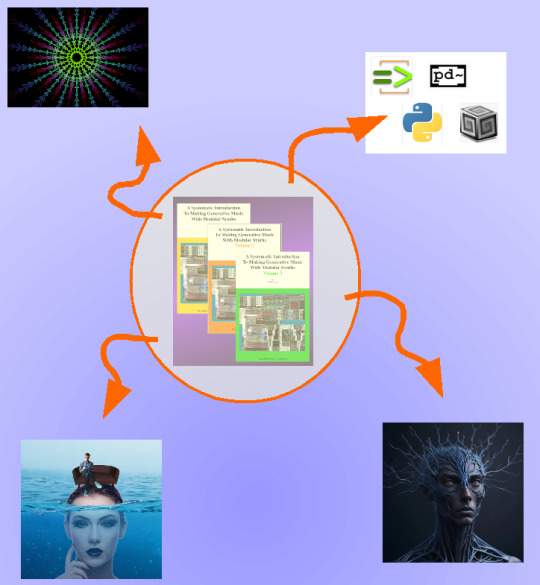
(there´s even a video about it:
youtube
Epiloque
And here it ends. These are the last sentences of my trilogy about making generative music with modular synths.
And these are the last few minutes of more than three years of working about this topic, of writing, of trying out patch techniques, of making graphics and all kinds of illustrations ... and of making hundreds and hundreds of video clips and embed them in these books.
If you have followed me through all three volumes of “A Systematic Introduction To Making Generative Music With Modular Synths” I´d like to say:
“Thank you for following me! Thank you very much indeed for reading and practising and working yourself through legions of pages and exercises. Thank you for following me through 1095 days (it ended up being even a few more), for telling me your opinion in emails, in your comments on social media and in Skype calls – and of course thank you for buying my e-books and for giving me all kind of support.”
You have worked yourself through a lot of stuff, really a lot, and you can rightly call yourself a master of generative music now.
Where should you – or we - go from here? How should you - or we – continue? What are the nearest related subject areas?
Well, it´s not only modular synths we can generate music with. Producing generative music by coding is one of these neighbouring fields of creativity.
And being a neighbour to both (modular and program code) there is the wide field of algorithmic composition.
And looking into another direction we see a group of “generative music generating” techniques marching under the flag of “Artificial Intelligence”.
And understanding yourself as a part of the generative system you may even want to explore the world of music and psychology, of how musical phenomena are experienced.
Alright then! There´s a lot to do, there are a lot of journeys waiting to be made.
Enjoy your day!
Rolf Kasten
#generative#generativemusic#music#musicproduction#musicproducers#modular#modularsynth#modularsynths#learningmodular#learninggenerative#learninggenerativemusic#makingmusic#makinggenerativemusic#sound#sounddesign#musiccomposition#electronicmusic#ambientmusic#algorithmiccomposition#experimentalmusic#artificialintelligence#AI#musiceducation#musicpsychology#codingmusic#computermusic#computergeneratedmusic#musicexploration#generativeart#creativecoding
1 note
·
View note
Text
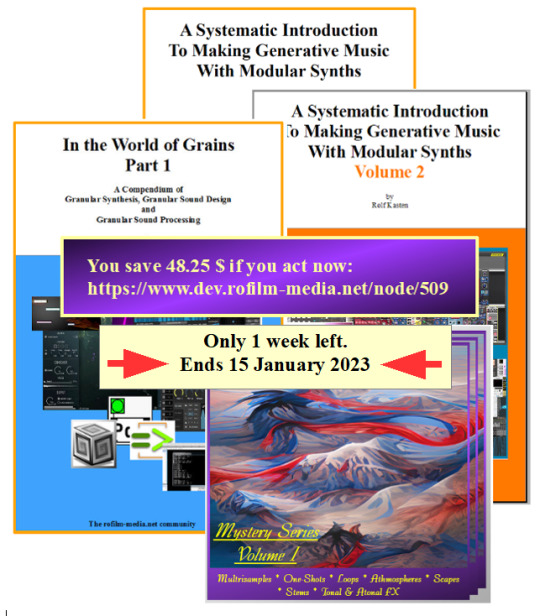
All e-books contain hundreds of example videos. This offer ends 15 January 2023 and won´t be prolonged. Read all the details here: https://dev.rofilm-media.net
Enjoy your day!
Rolf
#generative#generativemusic#modularsynths#musicproduction#sounddesign#sequencer#sequencers#makinggenerativemusic#modulargenerative#generativemodular#learninggenerative#learningmodular#grains#granular#granularsynthesis#granularsoundprocessing#sonicgrains#noise#experimental#electronicmusic#experimentalmusic
0 notes
Text
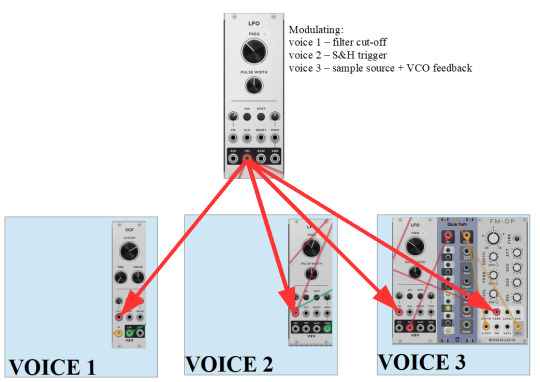
Teaching Generative Music With Modular Synths – Part 18
There three voices in the patch: the left one with the VCV Rack VCO as the sound engine, the middle voice with BASAL as the sound source, and the right voice with the FM-OP as sound source. The VCO and BASAL are pitch modulated by S&H modules, whose CV is quantised to a C-minor chord. The FM-OP is pitch modulated by an LFO (and again the CV is quantised to a C-minor chord).
The “master” LFO on top modulates (at the same time): the cut-off frequency of the filter in voice 1 (the left one), and rate of the trigger LFO in the middle voice, and the rate of the LFO as well as the amount of feedback in the right voice. These 4 parameters build one “compositional” group, don´t change independently but parallel.
Perhaps you have already got it: grouping parameters and subordinate them under one and the same modulator means imposing musical structure to the piece. This becomes even more obvious when we use a couple of sequencers as modulators, sequencers who are clocked by a master clock, as in the preset “chapter_5_preset_3” and the following video clip: https://youtu.be/TsS9vS3mJWk
By inserting inverter modules (attenuverters) between these “chief modulators” (which don´t have to be always LFOs of course) and certain parameters of a group we can make some parameters run “anti-parallel” and nevertheless still be in this same group. The preset “cuapter_5_preset_4” and the following video show an example: https://youtu.be/hpBXWBZEzjU
The decision which parameters from where all over the patch belong to the same group and shall be modulated parallel (or anti-parallel) is solely to the composer to make. There will be combinations that don´t make a lot of sense – I mean musically, and there will be combinations that make a lot of sense (but don´t overdo things). But it´s on you to decide. Decide according to your taste, your understanding of the piece, your will and your skills as the composer.
… to be continued
Stay creative and enjoy your day!
Rolf
or what about visiting our Facebook group: https://www.facebook.com/groups/rofilmmedia
#generative#generativemusic#modularsynths#musicproduction#sounddesign#sequencer#sequencers#makinggenerativemusic#modulargenerative#generativemodular#learninggenerative#learningmodular
0 notes
Text
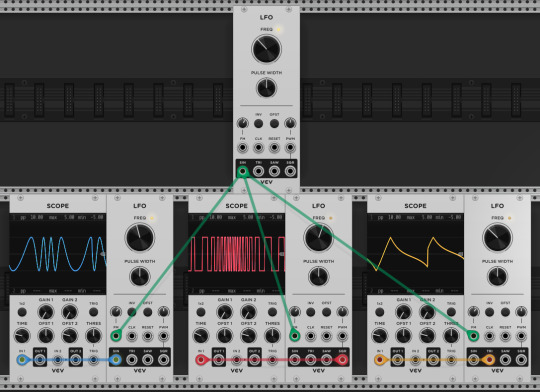
Teaching Generative Music With Modular Synths – Part 17
But even with chains of modulators of the same kind it is possible to think of hierarchically different levels: when one of the modulators (let´s take LFOs again) modulates a couple of other modulators of the same kind PARALLEL. Then, this one can be understood as sitting at a higher hierarchical level (it influences more than one outcome, whereas each of the others influences only its one individual modulation target.
Determining such groups of parameters by getting them modulated by one and the same modulation source (which may be a complex modulation network or only a single modulator module) is a compositional act representing my will as the composer of the piece. I´d like to call this “compositional strategy 1”.
The preset “chapter_5_preset_2” and the video clip the following link leads you to show an example:
youtube
… to be continued
Stay creative and enjoy your day!
Rolf
or what about visiting our Facebook group: https://www.facebook.com/groups/rofilmmedia
#generative#generativemusic#modularsynths#musicproduction#sounddesign#sequencer#sequencers#makinggenerativemusic#modulargenerative#generativemodular#learninggenerative#learningmodular#Youtube
0 notes
Text
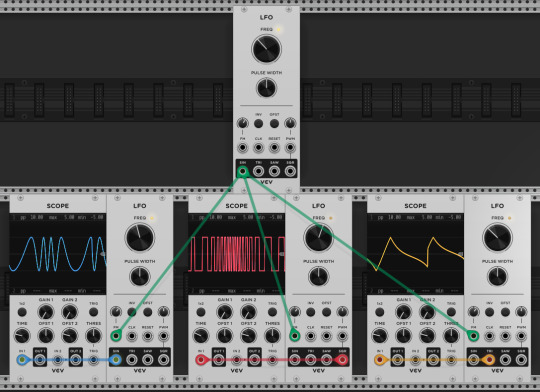
Teaching Generative Music With Modular Synths – Part 17
But even with chains of modulators of the same kind it is possible to think of hierarchically different levels: when one of the modulators (let´s take LFOs again) modulates a couple of other modulators of the same kind PARALLEL. Then, this one can be understood as sitting at a higher hierarchical level (it influences more than one outcome, whereas each of the others influences only its one individual modulation target.
Determining such groups of parameters by getting them modulated by one and the same modulation source (which may be a complex modulation network or only a single modulator module) is a compositional act representing my will as the composer of the piece. I´d like to call this “compositional strategy 1”.
The preset “chapter_5_preset_2” and the video clip the following link leads you to show an example:
youtube
… to be continued
Stay creative and enjoy your day!
Rolf
or what about visiting our Facebook group: https://www.facebook.com/groups/rofilmmedia
#generative#generativemusic#modularsynths#musicproduction#sounddesign#sequencer#sequencers#makinggenerativemusic#modulargenerative#generativemodular#learninggenerative#learningmodular#Youtube
0 notes
Text

Teaching Generative Music With Modular Synths – Part 16
Chapter 5.1: Hierarchies of Modulations
The term “hierarchy” lets us automatically think of a master-and-slave structure. But that´s not what this chapter is about. Here I´m writing about hierarchies in meaning, in importance, hierarchies of influence. An LFO that modulates another LFO may be seen as the master, but it´s meaning, its importance isn´t any larger than that of the modulated (slave) LFO. Both together build a team with one outcome.
But when, on the other hand, an LFO modulates a lot of different parameters all over a large patch, then this LFO will be more influential in this patch than another LFO, which modulates only a single parameter somewhere in the patch. The first one occupies a higher position in the hierarchy of modulations, a higher position from the composer´s point of view. And so will not only this LFO, this modulation, but also the group of thus commonly modulated parameters! The existence of this influential LFO allows us to view and to understand these modulated parameters that may be scattered throughout the patch as a GROUP.
But things get different when there are different kinds of modulators in a “modulator-modulates-modulator” chain. An LFO that modulates the duration of an envelope whose CV levels deliver the sample source for a Sample & Hold module that modulates the pitch of an oscillator is surely at a higher hierarchical level (from the composer´s point of view) than the S&H module, because it coins the character of the succession of pitches through imposing a rhythmical structure and because the composer can set its parameters (wave shape and rate) and determine the result of these settings, foresee them (the preset “chapter_5_preset_1” shows an example of this constellation).
… to be continued
Stay creative and enjoy your day!
Rolf
or what about visiting our Facebook group: https://www.facebook.com/groups/rofilmmedia
#generative#generativemusic#modularsynths#musicproduction#sounddesign#sequencer#sequencers#makinggenerativemusic#modulargenerative#generativemodular#learninggenerative#learningmodular
0 notes
Text

Teaching Generative Music With Modular Synths – Part 15
Chapter 5: Generative Music And Compositional Will
Let´s not forget the basic definition of the term “generative music”: The human sets the rules and the machine starts working and proceeding according to these rules. Sounds easy. But does this mean, that my active participation (and responsibility) as the composer ends after having set up these rules?
And how far “into” the piece of music do these rules cause – and what? The last part of this question, the “what”, leads us to another question: how and to what amount can I foresee and determine the sonic character of the piece by knowing these fundamental rules?
Or in other words: What are the “rules of these rules”, their “physics”, their interrelations, which make them work and produce the piece of sonic events? I have to know this to be able to set these rules consciously – without this knowledge and understanding, without being conscious about these interrelations and working mechanisms I could hardly be called a composer – perhaps not even a producer, but would stay at the level of just a “fiddling around guy” pretending to have achieved something (but nevertheless selling quite well often enough). Well, let´s take a header into unfamiliar waters.
We are in the world of modular synthesizer systems. In other areas (worlds) of algorithmic composition, the physical manifestation of the underlying rules is program code. In our world it is modules and cables, which is a lot more obvious and demonstrative on one hand, but carries a lot less systematics and structure in itself on the other hand.
One way to find a sensible route through the jungle will therefore be to develop a collection of useful patch strategies and sub-patches, strategies that make is possible to set up a kind of “compositional master plan” for a larger, more extensive generative patch.
A last warning before I introduce the first example (and with that the first of the mentioned kinds of strategies): it will be unavoidable that this chapter 5 will overlap thematically with chapter 6. So I will have to work with cross-references here as well as in chapter 6 from time to time.
… to be continued
Stay creative and enjoy your day!
Rolf
or what about visiting our Facebook group: https://www.facebook.com/groups/rofilmmedia
#generative#generativemusic#modularsynths#musicproduction#sounddesign#sequencer#sequencers#makinggenerativemusic#modulargenerative#generativemodular#learninggenerative#learningmodular
0 notes
Text
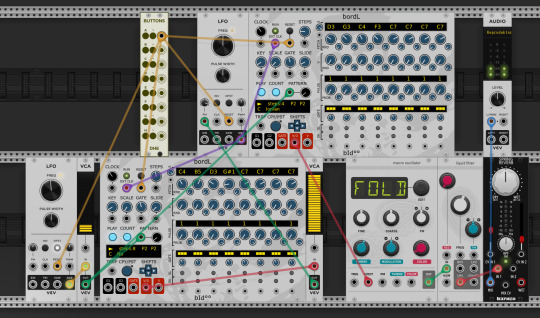
Teaching Generative Music With Modular Synths – Part 14
Chapter 4b: More Diverse Special Random Operations
The next example is with words. The words “love – and – hate – children – same – mother” are fed into a random mixer, each in its own channel (the word “mother” occupies three channels, and the word “love” is sent through a delay). The mixer randomly blends the channels in and out. Using a trigger pulse (second part of the video) the blend changes only when a trigger pulse arrives. We can achieve the same even without a special random mixer module by using random switches and VCAs. The preset is called “chapter_4_preset_1”, and the video is hiding behind the following link: https://youtu.be/xatc-VqmZlo
An alternative to a random mixer is a random gate. Here the parts are not blended into each other but activated in random order. We hear only one word at a time. The preset “chapter_4_preset_2” and the following video demonstrate this: https://youtu.be/lLmZByUENUg
I did a social-acoustic survey to get random looking results with sociological meaning. Or in other words: How does the sociological structure of my town sound like?
Well, let me explain. I took a picture (you can take any picture) and showed it to the people. I simply asked everybody - in fact I asked only 4 people (I´ve got 5 adult children, but 1 of them lives abroad - it´s about the principle, not the result). The first question was: “How do you like this picture on a scale from 1 to 10?” There was also a second question: “How often do you drink beer in a week? Every day? Every second day? ...” I took the numbers I got from the first question and transferred them to notes on a scale/octave, and the numbers from the second question (always both from the same person) to set the length of the note. I did this twice to get two different patterns.
What I got was the preset “chapter_4_preset_3” shown in the video clip behind the following link:
youtube
In the preset the patch switches between the two gained patterns. I could have made the rate of switching dependent on another survey, but I didn´t.
Alright, this was not a serious sociological-random-generative-sonic experiment, but I could have been! Choosing meaningful pictures, choosing certain groups of people (and more than only 4! And no relatives!) and comparing the sonic results may well be an interesting experience.
Some words about the patch now. The BUTTON module makes the two LFOs as well as the two sequencers start and run synchronously. And the VCA between the switching LFO down on the left side acts as an attenuator taking care, that the sequencers switch only between the first 2 patters (I produced only 2 patterns as I told you above).
The sequencer in the lower row modulates the rate of the (synchronously running) LFO in the upper row, which delivers the clock for the sequencer in the upper row (which delivers the pitch CV). And so the sequencer down there sets the length of each note by determining how long the sequencer in the upper row stays at each individual step.
With more and longer patterns, real surveys and interesting pictures to show the people we can get musically nice results, which are random in most of their aspects, but nevertheless (kind of) based on sociology.
And in case we wanted less sociology based and more changing results, we can remove the button module and stop make things run synchronously.
Alright! I think it is time for less off-the wall methods and thought now. There are a lot of basic (and perhaps more serious) strategies left to talk about before we are prepared for “extensive patching”, prepared well enough to not get lost.
… to be continued
Stay creative and enjoy your day!
Rolf
or what about visiting our Facebook group: https://www.facebook.com/groups/rofilmmedia
#generative#generativemusic#modularsynths#musicproduction#sounddesign#sequencer#sequencers#makinggenerativemusic#modulargenerative#generativemodular#learninggenerative#learningmodular#Youtube
0 notes
Text
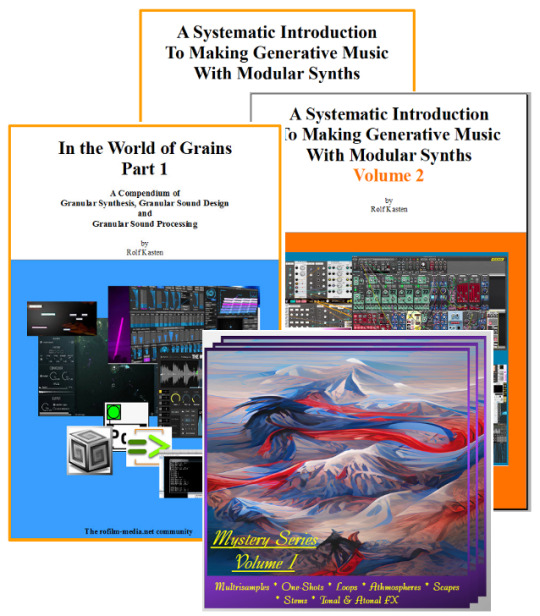
My biggest End-of-Year Sale ever!
3 E-books, all in all 768 pages including 296 videos and 208 presets
plus a 50% sales discount on my next sample pack “Mystery Series” Volume 1 (coming 20 January 2023) including multisamples, one-shots, loops, atmospheres, stems and scapes.
The 3 E-books are:
“A Systematic Introduction To Making Generative Music With Modular Synths”, Volume 1
(see the content here: https://www.dev.rofilm-media.net/node/331)
“A Systematic Introduction To Making Generative Music With Modular Synths”, Volume 2
(see the content here: https://www.dev.rofilm-media.net/node/467)
“In the World of Grains”, Volume 1
(see the content here: https://www.dev.rofilm-media.net/node/332)
The “Mystery Series” material contains carefully handcrafted sounds. Combining field recordings with classical hardware synths as well as with the most up to date software instruments, refining the results using sophisticated (partly self-written) software tools and putting it all together to a mesmerising sonic journey into a fantastic world: that´s my new series of sample packs called the “Mystery Series”. It´s conic metaphysics, it´s audible fantasy, and it´s a unique toolbox for every soundtrack composer, game sound producer, story teller ….
All of this: 3 E-Books plus a 50% sales discount on “Mystery Series” Volume 1 (coming 20 January 2023) for altogether
39,- $
Please click here to take advantage of this big End-of-Year offer:
#musicproduction#modularsynths#sounddesign#learningmodular#generative#generativemodular#generativemusic#learninggenerative#makinggenerativemusic#modulargenerative#granular
0 notes
Text
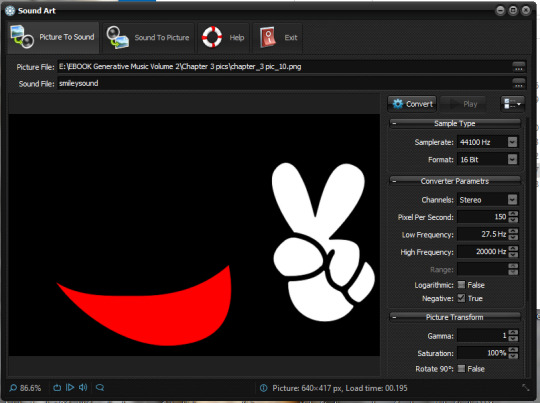
Teaching Generative Music With Modular Synths – Part 13
Chapter 4: Diverse Special Random Operations
Converting pictures and graphics to sound files leads to unique kinds of sonic results, which we can either directly use in our pieces, or which we can use as trigger sources like in the last chapter. There are a couple of programs out there, which do this task even outside of DAWs and VST/AU environments. Let me mention only two stand-alone alternatives. The first is “SoundArt” by Stone Voices. It´s freeware and quite versatile. You can download it here: https://stone-voices.ru/application/soundart/?lang=en This software allows you even to go into the other direction: converting sound to picture.
The other piece of software I want to mention here is “SonicPhoto” by Skytopia. It is not freeware, but there is a free demo version, which doesn´t allow you to save generated sound files, which are longer than 5 seconds – but we all know Audacity don´t we? You get to the software here:
And let´s not forget about our VSTs (third party or part of the stock VSTs in our DAWs), like e.g. Harmor in FL Studio etc.
The following video clips demonstrate SonicPhoto and SoundArt:
SonicPhoto: https://youtu.be/d05E_SbAZ0s
SoundArt: https://youtu.be/x864KlgvGFk
Again: The results are not really random of course, but can you predict, exactly predict, how a certain picture will sound?
… to be continued
Stay creative and enjoy your day!
Rolf
or what about visiting our Facebook group: https://www.facebook.com/groups/rofilmmedia
#generative#generativemusic#modularsynths#musicproduction#sounddesign#sequencer#sequencers#makinggenerativemusic#modulargenerative#generativemodular#learninggenerative#learningmodular
0 notes
Text

Teaching Generative Music With Modular Synths – Part 12
The last part about different kinds of triggering random events in generative music, as I describe in Volume 2 of my e-book trilogy about making generative music with modular synths:
When you leave your studio (at least from time to time), and walk around with open eyes and a photo camera, or a cell phone (or a pencil and a block of paper), you will discover legions of patterns that can serve as random triggers: the rate at which dark haired ladies (kick drum) and women with blonde hair (snare) and red haired girls (tom tom) and men with beards (pitched notes) are passing by the place where you are standing/sitting.
Or the distances between trees in the forest. Or the distances between the pieces of litter on the path in the park. Or take a look at the timetable at a big bus station or at the railway station and note the rate at which buses/trains/certain buses/certain trains … come in and go out. Or take a look at the arrangement of base pairs in the DNA of a mouse, a crowfoot, a bee etc. and arrange percussion hits according to your findings (not really random but very impressive) in your DAW, record them and use the recording as we did in the last examples – or use a MIDI module to transfer them into your modular system (hardware or software).
A last method: create your own mechanical real world events. For example by letting a couple of wooden pieces fall into a large (beautiful) tin box as use the recording as done in the preset “chapter_3_preset_10” and the following two video clips, the first of which shows the action, and the second is a recording of the aforementioned preset.
“action video”: https://youtu.be/6wf3nXh0BBc
recorded patch: https://youtu.be/NWrhIx-IcSk
There are 4 voices in the patch, the first of which is triggered by the first impulse, the second by the second impulse etc.
Let only mention here, that there are legions of special trigger modules in VCV Rack, and quite a lot in hardware. I am going to introduce quite “a few” of them in chapter 7 in more detail.
… to be continued
Stay creative and enjoy your day!
Rolf
or what about visiting our Facebook group: https://www.facebook.com/groups/rofilmmedia
#generative#generativemusic#modularsynths#musicproduction#sounddesign#sequencer#sequencers#makinggenerativemusic#modulargenerative#generativemodular#learninggenerative#learningmodular
0 notes